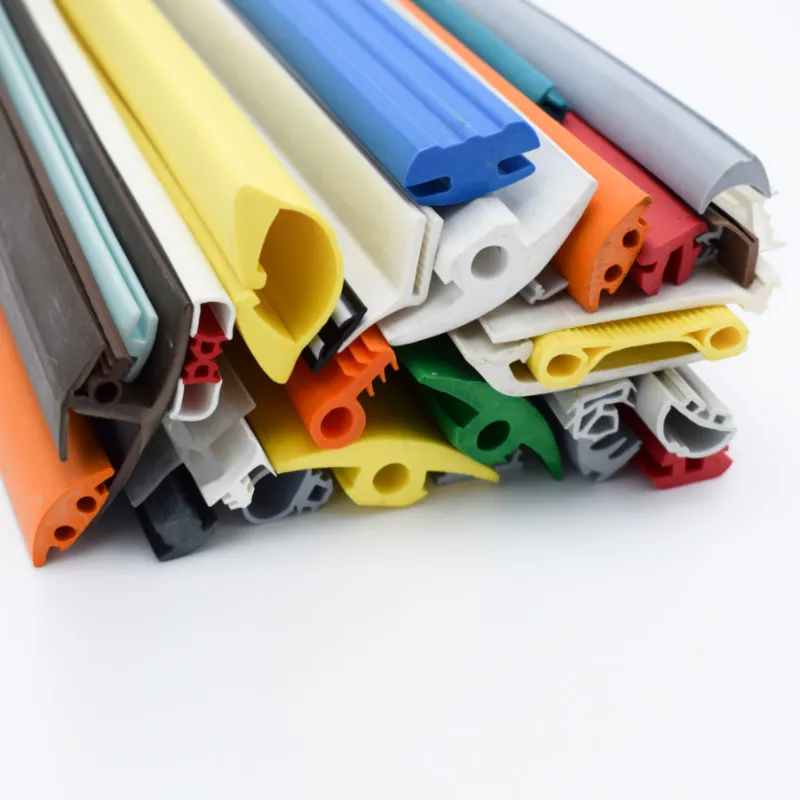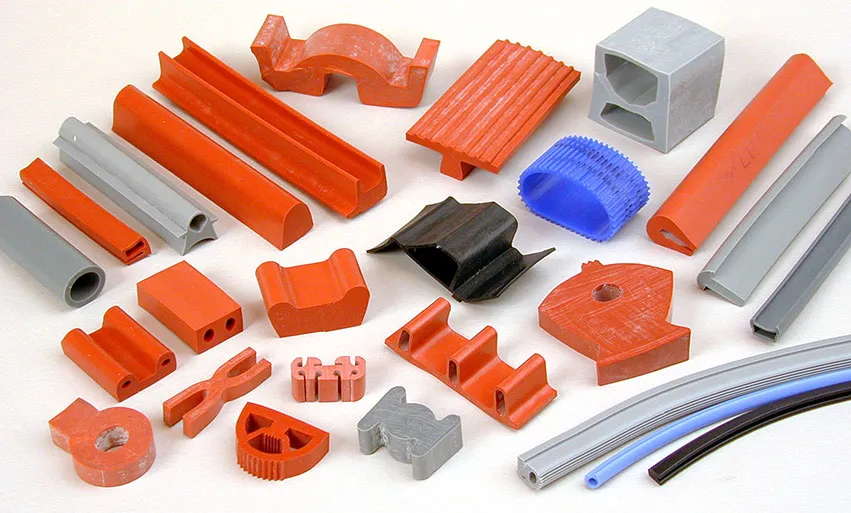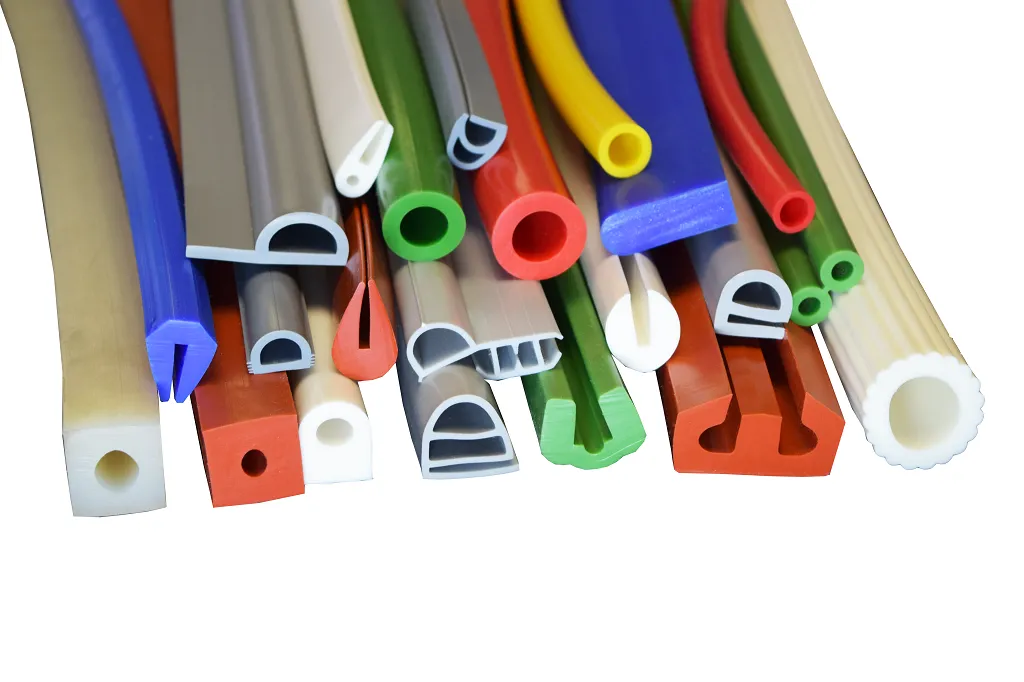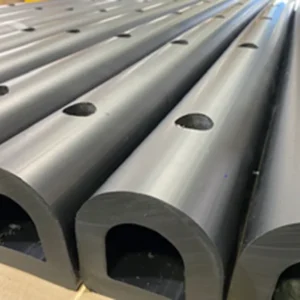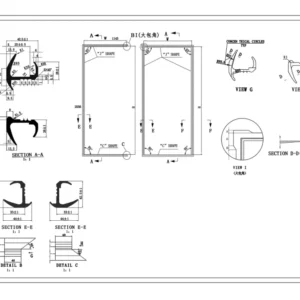Custom Rubber Extrusions
Custom Rubber Extrusions
Our container door seal profiles are designed to deliver superior weatherproofing and airtight protection, ensuring your cargo stays safe and secure throughout transit or storage. These seals prevent water ingress, dust, wind, and temperature fluctuations, safeguarding the integrity of containers in harsh outdoor environments.
Made from high-quality materials like EPDM rubber, our seals are UV, ozone, and weather-resistant, offering long-lasting durability with minimal maintenance. With easy installation options and a variety of profiles available, our container door seals ensure a tight fit that enhances energy efficiency and reduces operational costs.
Details About Custom Rubber Extrusions
Details About Custom Rubber Extrusions
Rubber Extrusions: The Guide for Sealing and Insulation Solutions
Introduction: Why Rubber Extrusions Matter for Manufacturers and Contractors
In construction, automotive, and appliance manufacturing, rubber extrusions play a vital role in achieving effective sealing, insulation, and energy efficiency. These custom-engineered components are crafted by shaping rubber through a die, producing profiles that perfectly suit specific applications. This guide explores how rubber extrusions can address industry challenges, improve durability, and add value for contractors, manufacturers, and project managers.
Understanding Rubber Extrusions: Materials, Manufacturing, and Customization
What Are Rubber Extrusions?
Rubber extrusions are continuous rubber profiles designed to meet exact specifications in industrial applications. They can be customized into various shapes (e.g., D-shape, U-shape, T-shape), which are ideal for sealing, weatherproofing, and noise reduction. This versatility makes them crucial for professionals in building facades, automotive doors, and refrigeration units who require precision and durability.
Key Materials Used in Rubber Extrusions
Choosing the right material is essential to ensure longevity and performance under different conditions. Commonly used materials include:
- EPDM (Ethylene Propylene Diene Monomer): Excellent resistance to UV, ozone, and extreme weather, making it ideal for outdoor seals in construction.
- Silicone: Tolerates high temperatures and resists moisture, suitable for applications in food processing, medical devices, and appliances.
- Neoprene: Offers chemical and oil resistance, frequently used in industrial gaskets and automotive applications.
Selecting the correct material can greatly impact performance, especially in harsh environments where durability and resistance are critical.
Manufacturing Process Overview
The rubber extrusion process includes:
- Feeding: Rubber compound is fed into an extruder.
- Shaping: Heated rubber is forced through a die, creating the desired profile.
- Curing: Rubber is vulcanized to enhance durability.
- Finishing: Extrusions are cut and inspected for quality.
Each stage allows customization to meet specific requirements, which is invaluable for manufacturers and contractors needing specialized seals.
Key Applications of Rubber Extrusions Across Industries
Building and Construction
Rubber extrusions provide weatherproofing and insulation in commercial and residential projects. They are essential for:
- Window and Door Seals: Rubber extrusions prevent heat loss, reduce drafts, and enhance energy efficiency, supporting sustainable building practices.
- Expansion Joints: These are used to absorb movements in building materials, ensuring that seals remain intact during temperature changes or structural shifts.
Automotive
In the automotive industry, rubber extrusions play a significant role in enhancing comfort and durability. Key applications include:
- Door and Window Seals: These extrusions reduce noise, keep out dust, and provide weather resistance, improving passenger comfort.
- Engine Compartment Seals: By protecting vital components from contaminants and temperature variations, rubber extrusions help extend engine life and maintain vehicle performance.
Refrigeration and Appliances
For appliance manufacturers, rubber extrusions are crucial for temperature control and efficiency:
- Refrigerator Seals: By providing airtight seals, rubber extrusions prevent energy loss and help appliances maintain consistent temperatures.
- Noise Reduction: Rubber extrusions also help reduce operational noise, adding value for both manufacturers and end-users.
Benefits of Rubber Extrusions for Industrial and Wholesale Clients
- Cost Efficiency: High-quality extrusions result in long-term savings by reducing maintenance costs and improving energy efficiency.
- Customization Flexibility: Rubber extrusions can be tailored in shape, size, and material composition, ensuring a perfect fit for specific applications and performance requirements.
- Environmental Durability: These components resist weather, UV exposure, and extreme temperatures, making them ideal for industries where products must withstand harsh conditions.
Selecting the Right Rubber Extrusions for Your Needs
When choosing rubber extrusions, consider these key factors:
- Application Requirements: Assess the size, shape, and material best suited for your specific needs (e.g., durability for construction or flexibility for automotive).
- Environmental Conditions: Select materials that match the temperature range and exposure levels of your application.
- Manufacturer Collaboration: Working closely with a reliable manufacturer ensures that custom specifications, material properties, and project requirements are met effectively.
Quality Standards and Certifications in Rubber Extrusions
For industrial clients and project managers, quality assurance is essential. High-grade rubber extrusions should comply with standards such as ISO and RoHS, ensuring performance, consistency, and safety. Certifications guarantee that extrusions meet industry-specific criteria, which is critical for applications in sectors with strict regulatory requirements.
Case Studies: Success Stories in Rubber Extrusion Applications
- Building Facade Project: A recent commercial construction project used custom EPDM rubber extrusions in expansion joints to create airtight seals. This minimized heat loss, reduced energy costs, and supported the building’s green certification goals.
- Automotive Noise Reduction: A major automotive manufacturer employed neoprene extrusions to reduce road noise and improve cabin comfort, enhancing the user experience and decreasing warranty claims related to sealing issues.
- Energy-Efficient Refrigeration: By incorporating silicone rubber extrusions, a leading appliance manufacturer optimized insulation and reduced energy loss in their refrigerators, adding value and improving appliance efficiency.
Future Trends: Sustainability and Innovation in Rubber Extrusions
Rubber extrusion technology is evolving to meet sustainability demands and adapt to advanced applications. Innovations include:
- Eco-Friendly Materials: Using recycled rubber materials to reduce waste and support circular economy initiatives.
- Advanced Material Science: Nanotechnology and smart rubber materials are extending durability and resilience, allowing extrusions to adapt to changing environmental conditions.
Conclusion: The Value of Rubber Extrusions for Industry Professionals
Rubber extrusions offer reliable, customizable, and cost-effective solutions across multiple sectors, from construction to automotive and appliances. For industry professionals, understanding and selecting the right rubber extrusion not only enhances performance but also contributes to long-term savings and product longevity. Collaborating with experienced manufacturers can help you achieve tailored solutions that meet both functional and environmental demands, making rubber extrusions a strategic investment in quality and durability.
Discuss the details of
your seal solution
Submit Your Inquiry to Primesealsolution,
All the Inquiries Will Be Replied Within 12 Hours.
More Rubber Seals Support Your Project
More Rubber Seals Support Your Project
FAQ For Rubber Seals
FAQ For Rubber Seals
How to Choose the Right Material?
Customers often ask how to select the appropriate material based on their working environment (e.g., high temperature, low temperature, chemical corrosion). Common materials include EPDM, silicone, nitrile rubber (NBR), and fluororubber (FKM), each offering specific resistance properties for different applications
What Temperature Range Can the Seal Handle?
Customers often ask how to select the appropriate material based on their working environment (e.g., high temperature, low temperature, chemical corrosion). Common materials include EPDM, silicone, nitrile rubber (NBR), and fluororubber (FKM), each offering specific resistance properties for different applications
What Are the Key Points to Ensure Proper Installation?
Proper installation is crucial for performance, and customers want to know how to keep the surface clean, avoid over-stretching, and whether to use lubricants for easier installation
What Should I Do if the Seal Ages or Fails?
Over time, seals may crack or deform. Customers often inquire about how to identify these issues early and use rubber rejuvenators to prolong their lifespan or properly replace failed seals
What Should I Do if the Seal Ages or Fails?
Over time, seals may crack or deform. Customers often inquire about how to identify these issues early and use rubber rejuvenators to prolong their lifespan or properly replace failed seals
Are Rubber Seals Environmentally Friendly?
Clients in eco-focused industries may ask about the material’s recyclability and environmental compliance, especially for projects aligned with green building certifications
How Can I Extend the Seal’s Service Life?
Customers are interested in maintenance tips such as choosing suitable materials, regular cleaning, avoiding overloading, and ensuring proper use to maximize durability

